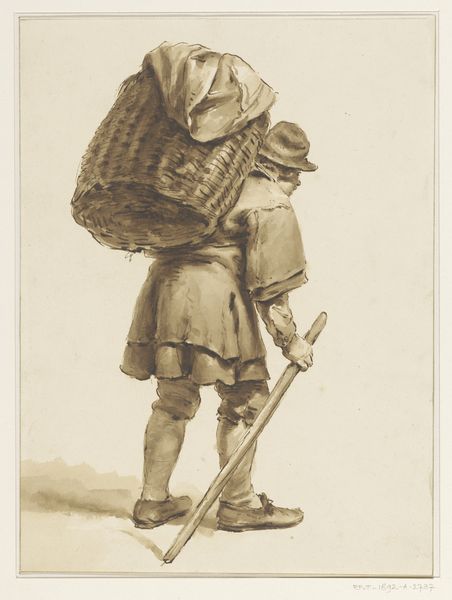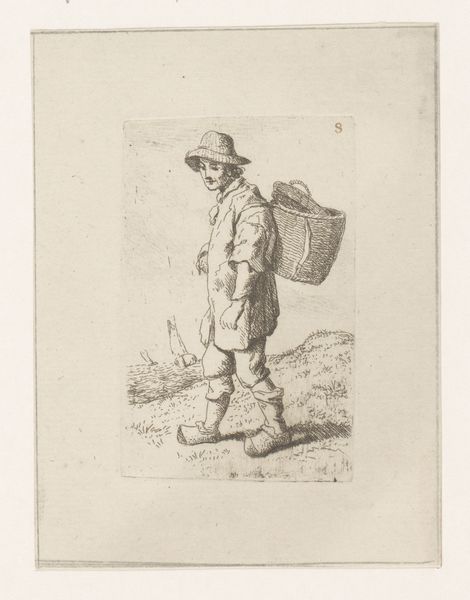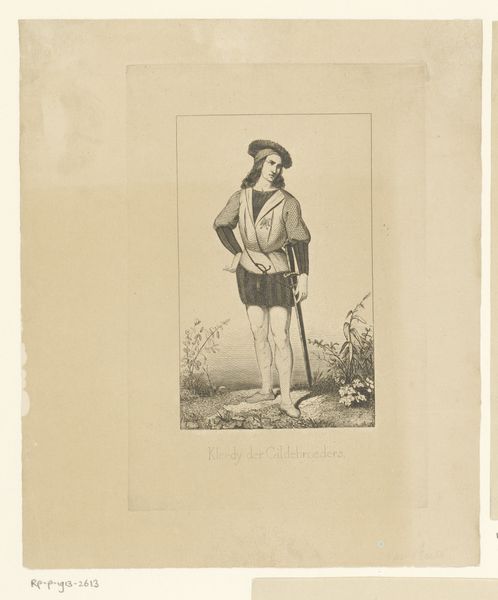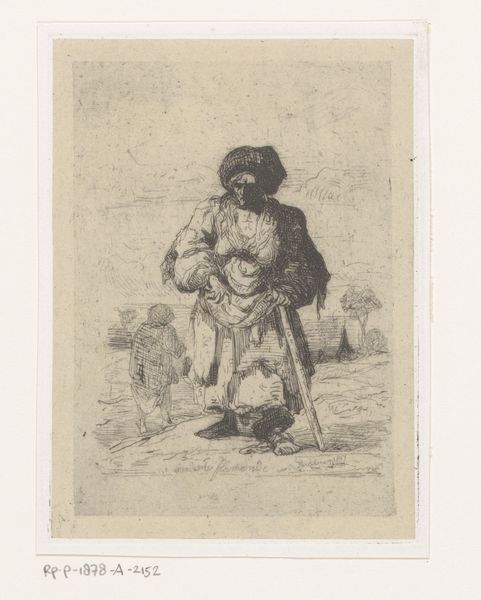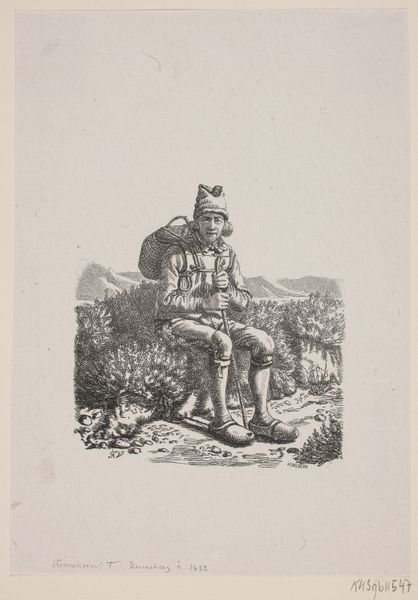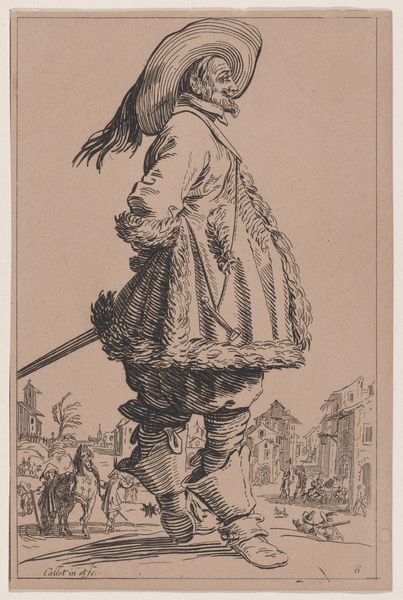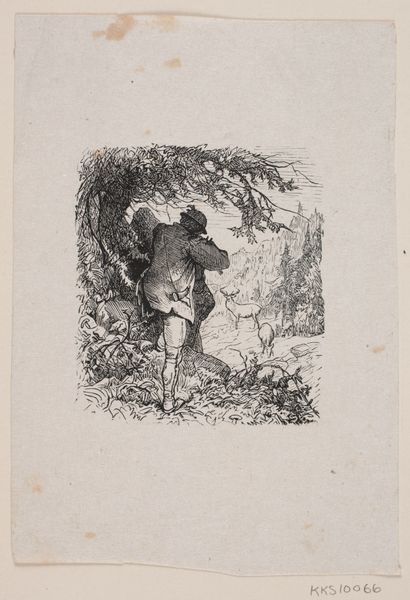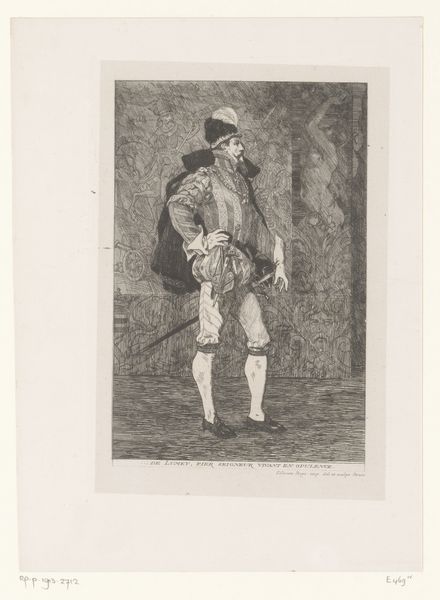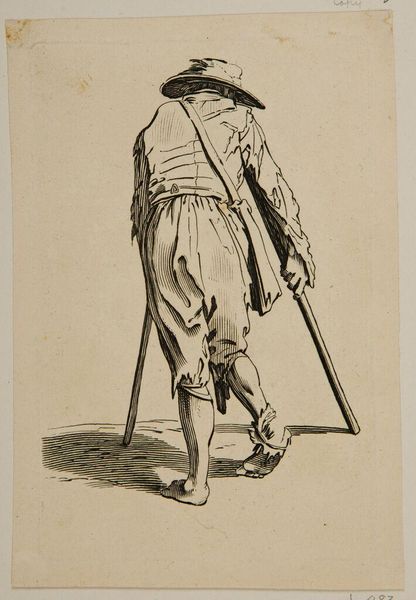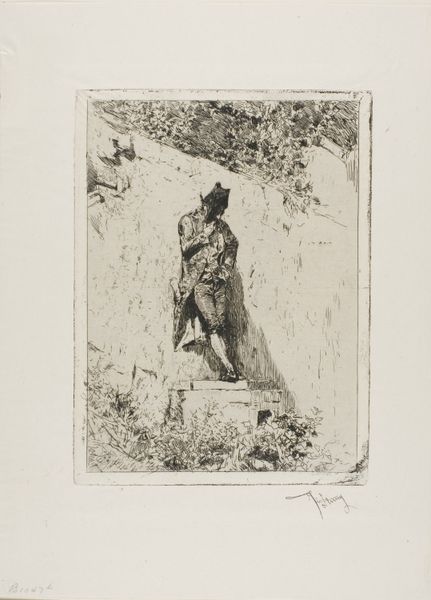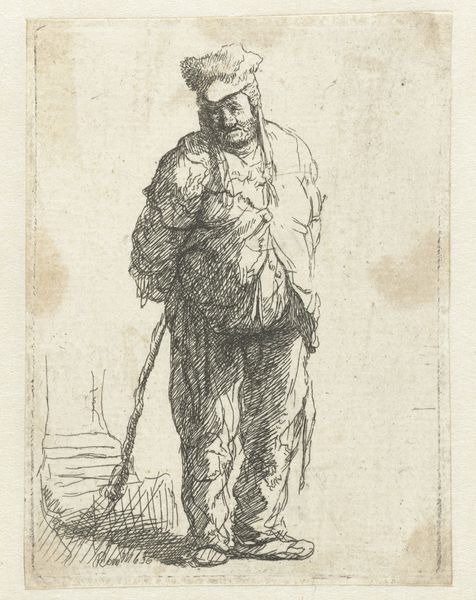
Imogen hunched over holding a sword, scene from Shakespeare, Cymbeline, Act 3 Scene 6 19-19
0:00
0:00
drawing, print, engraving
#
drawing
#
narrative-art
# print
#
pencil sketch
#
figuration
#
engraving
Dimensions: Sheet: 7 3/8 × 5 7/8 in. (18.8 × 15 cm) Image: 4 1/2 × 3 9/16 in. (11.5 × 9 cm)
Copyright: Public Domain
Editor: This is a print from around 1900, depicting Imogen from Shakespeare’s Cymbeline. She’s hunched over, clutching a sword, looking pretty dejected. There’s a definite air of melancholy about it. What first strikes you when you look at this piece? Curator: It’s a poignant visual reduction of Imogen’s psychological state. The sword she’s holding is not necessarily a symbol of violence here. Rather, consider the phallic sword, usually a sign of male virility and strength – is it a clue to her assumed identity and loss? The weight of the object contributes to the figure’s slump. It signifies the burden she bears in this act. Editor: That’s interesting – I was so focused on the sadness, I missed that potential reading of the sword as a stand-in for masculine identity. Curator: Yes, exactly. Think about the other cultural symbolism present, such as the historical Roman garment: does her cross-dressing imply deeper, unacknowledged conflicts within herself, outside patriarchal constraints? Also consider how these external and visible markers were understood, both in Shakespeare’s time, and again around 1900. Editor: So, you're suggesting the artist used costume and posture to speak to Imogen’s internal turmoil, not just the plot of the play? Curator: Precisely. The external narrative is well-known. Here, the image lingers instead on internal conflict and hidden tensions surrounding sexual identity using familiar symbolic shorthands of its time. What do you make of the landscape elements in this reading? Editor: That's a good point. The unkempt patch of land that she's standing on also suggests isolation and unease. Seeing the character in the drama as part of a larger cultural context of evolving ideas of sexuality really helps me understand it. Curator: Indeed. By focusing on enduring, recognizable symbolic elements, we gain insight into historical identity as more than the product of individual decisions. Editor: Thank you for sharing; I definitely see much more now.
Comments
No comments
Be the first to comment and join the conversation on the ultimate creative platform.

